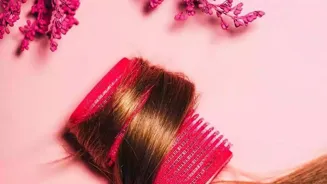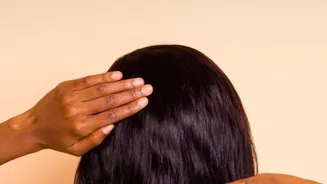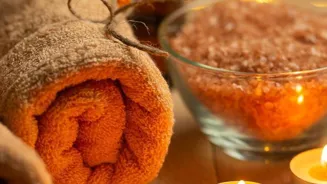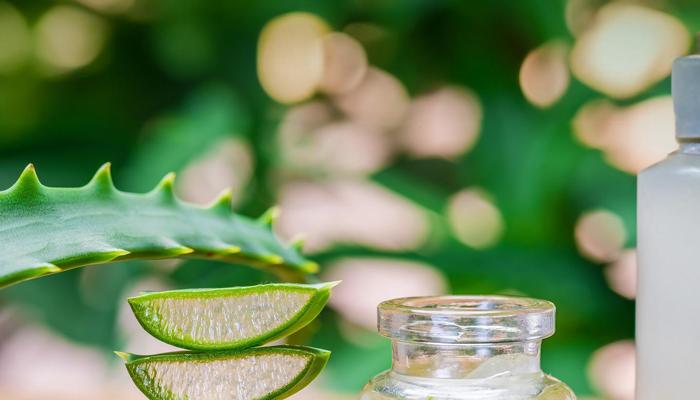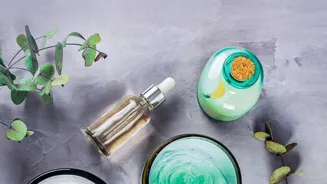Discover 10 Essential Tips for Protecting Your Hair from Heat Damage! Learn how to shield your locks from harm
Heat styling – be it through straightening, curling, or even blow-drying – can work wonders
for our hair, giving us the look we desire for that special occasion or even a regular day at the office. But, ladies, let's face it.
Overdoing the heat can leave our precious locks dry, brittle, and prone to breakage. In India, with our diverse climate and the increasing popularity of heat styling tools, protecting our hair from heat damage is more crucial than ever. Don't worry, though!
You can still enjoy your favourite hairstyles without sacrificing the health of your hair. Here are ten essential tips to help you shield your hair from the scorching effects of heat styling.
Always Use a Heat Protectant Spray
Think of heat protectant spray as the sunscreen for your hair. Before you even think about switching on your straightener or curling iron, spritz a generous amount of heat protectant evenly throughout your hair.
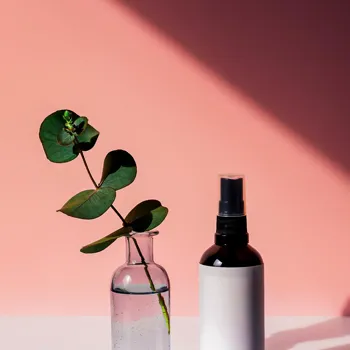
This creates a barrier between your hair and the hot tool, minimizing the damage caused by high temperatures. Look for products that contain ingredients like silicone, keratin, or natural oils. These ingredients help to coat the hair shaft, preventing moisture loss and reducing frizz.
Remember to apply it from root to tip, ensuring every strand is covered. Don't be shy with the spray, but avoid saturating your hair, as this can make it stiff and difficult to style. This simple step can make a world of difference in preventing split ends, breakage, and overall dryness.
So, make heat protectant your best friend and never skip this crucial step. Consider switching to heatless styles one or two days a week, if possible, such as braids, buns, or simply letting your hair air dry, can significantly reduce the amount of heat exposure your hair experiences.
Lower the Heat Setting
This might seem obvious, but it's a game-changer. Most styling tools come with adjustable heat settings. Resist the urge to crank it up to the highest temperature, thinking it will style your hair faster.
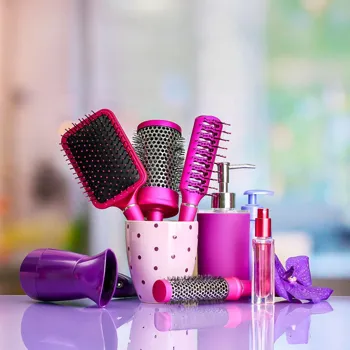
High heat can cause irreversible damage, leading to dry, brittle hair that is prone to breakage. Start with the lowest setting, and only increase it gradually if you need to.
Remember, it's better to pass the tool over your hair a few more times at a lower temperature than to blast it with intense heat in one go. Indian hair, in particular, can be quite resilient but prolonged exposure to high temperatures will cause damage.
Also take the time to learn which styles you can achieve without needing maximum heat. Experiment with different products like hair mousse to enhance your hair’s natural waves, use hair rollers to create volume without heat.
Dry Your Hair Properly Before Styling
Never, ever use a hot styling tool on wet or damp hair! Water boils at 100 degrees Celsius, and when you apply heat to wet hair, the water inside the hair shaft turns to steam, causing it to expand and weaken the hair structure. This can lead to severe damage, including breakage and split ends.
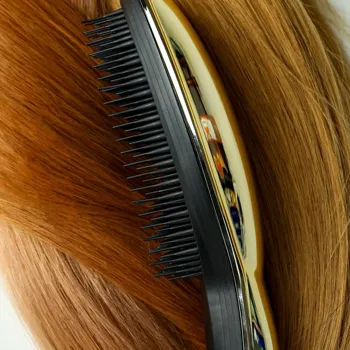
Always ensure your hair is completely dry before using any heat styling tool. If you're blow-drying, use a low heat setting and a nozzle attachment to control the airflow.
Allow your hair to air dry as much as possible before blow-drying, this way you are not using high temperatures for long periods of time. Also, use a microfiber towel to gently blot your hair dry instead of rubbing it vigorously, which can cause friction and damage.
This way, you can ensure only dry hair is exposed to heat. This simple practice could be a gamechanger to your hair health.
Invest in Quality Styling Tools
Not all styling tools are created equal. Cheap, low-quality tools often have uneven heat distribution, which can lead to hot spots that damage your hair. Invest in high-quality styling tools with adjustable temperature settings and ceramic or tourmaline plates.
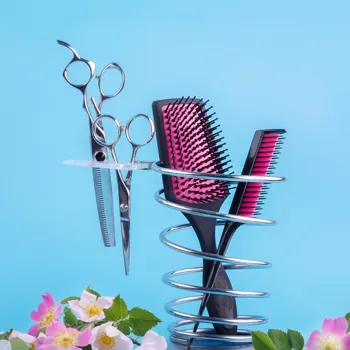
These materials distribute heat more evenly, minimizing the risk of damage. Look for tools with features like ionic technology, which helps to reduce frizz and add shine.
While these tools may be a bit more expensive, they're a worthwhile investment that will pay off in the long run and protect your hair. Moreover, cleaning your styling tools regularly is essential. Buildup of hair products will conduct heat unevenly.
Invest in good quality tools that suit your hair type. Regular maintenance of these tools will ensure a longer life span.
Deep Condition Regularly
Heat styling can strip your hair of its natural moisture, making it dry and prone to breakage. To combat this, incorporate a deep conditioning treatment into your hair care routine at least once a week.
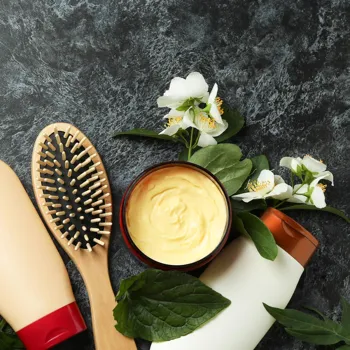
Use a rich, hydrating hair mask that contains ingredients like coconut oil, shea butter, or argan oil. Apply the mask to damp hair, focusing on the ends, and leave it on for at least 20-30 minutes before rinsing thoroughly.
Deep conditioning helps to replenish moisture, strengthen the hair shaft and improve elasticity. You could also consider using a leave-in conditioner after washing your hair to provide extra hydration throughout the day. This acts as a barrier against environmental factors.
Regular deep conditioning is key to maintaining healthy, hydrated hair that can withstand the effects of heat styling.
Trim Your Hair Regularly
Regular trims are essential for maintaining healthy hair, especially if you frequently use heat styling tools. Heat can cause split ends, which can travel up the hair shaft if left untreated, leading to further damage.
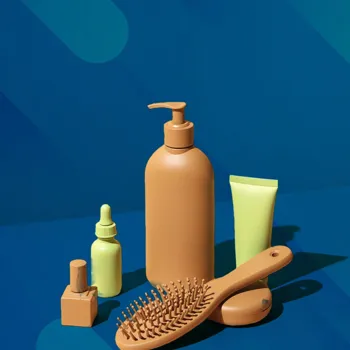
Aim to trim your hair every 6-8 weeks to remove split ends and prevent them from spreading. A trim doesn't mean you have to chop off a lot of length; even a small trim can make a difference. Regular trims keep your hair looking healthy, vibrant, and less prone to breakage.
By nipping those split ends in the bud, you are preventing them from causing more damage to your hair. Additionally, getting regular trims prevents hair from feeling rough or looking dull. This helps your hair look healthier and allows for more manageable styling.
Use Styling Products Wisely
Be mindful of the styling products you use in conjunction with heat. Some products can actually exacerbate heat damage, especially those containing alcohol, which can dry out the hair. Opt for lightweight, hydrating products that are specifically designed for use with heat styling tools.
Avoid using too much product, as this can create a build-up that weighs down your hair and makes it more prone to damage. Products that add moisture are an ideal choice.
Read the ingredients, research what type of ingredients are considered better for use with heat styling and follow instructions on the products carefully. Using too much can sometimes make your hair sticky or too stiff.
Take Breaks from Heat Styling
The best way to protect your hair from heat damage is to simply reduce the amount of heat you use. Try to take breaks from heat styling at least a few times a week. Experiment with heatless styling techniques like braids, buns, or twists.
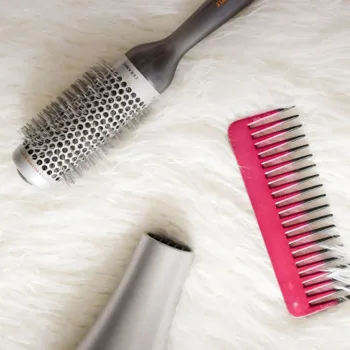
These styles can be just as stylish and can give your hair a chance to recover from the damaging effects of heat. Embrace your natural hair texture every now and then. Letting your hair air dry allows it to retain moisture and reduces the risk of breakage.
Look for inspirational styling tutorials online that use creative ways to style hair heat free. This will give your hair a break and allow it to repair itself.
Protect Your Hair in the Sun
Just like your skin, your hair can also be damaged by the sun's harmful UV rays. Prolonged sun exposure can dry out your hair, fade your color, and make it more prone to breakage. When spending time outdoors, especially during the hottest part of the day, protect your hair with a hat or scarf.
You can also use hair products that contain UV filters. These products will help to shield your hair from the sun's damaging effects. Use an umbrella when possible to avoid direct exposure. Using hair oils after sun exposure can also help in replenishing moisture to your hair.
Remember, sun protection is not just for your skin. Your locks need it too!
Pay Attention to Your Hair's Condition
The best way to adapt the suggestions to your hair condition is to closely monitor its daily needs. If the ends look a little rough, you probably need to moisturize it or trim it. If the hair is limp, chances are you need products for volume. Listen to your hair's needs.
If you notice that your hair is becoming increasingly dry, brittle, or prone to breakage, it's a sign that you need to take action. Cut back on heat styling, increase your use of deep conditioning treatments, and consider consulting with a hair stylist for professional advice.
The quicker you diagnose your hair's needs, the faster you can bring it back to its healthy glory. Hair changes depending on the climate, products you use, and your internal well-being. All these have an impact on hair, so you should pay attention and act accordingly.
Being proactive can prevent further harm and keep your hair looking its best.
AI Generated Content. Glance/InMobi shall have no liability for the content
